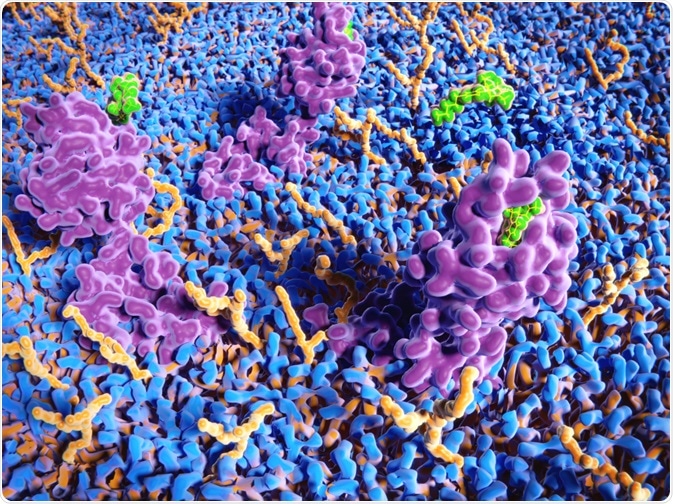The increasing legalization of cannabis calls for more in-depth testing on its effects
Legalization of cannabis and related synthetic substances is increasing worldwide, each year more nations and states have decriminalized or relaxed laws surrounding cannabis use.

Image Credit: Juan Gaertner/Shutterstock.com
As the use of cannabinoids become commonplace, investigation of the effects become increasingly important, in order to ensure that governments are well informed for making decisions regarding regulation.
Cannabinoids are compounds found in the cannabis plant, some of them are psychoactive (THC), and some are regarded as having health benefits (cannabidiol). Cannabinoids are now available in a growing number of products that are used and regulated in different ways. As a family of products, cannabinoids are rising in popularity as their legalization progresses around the world.
Previously, cannabis has been illegal therefore has been almost impossible to study within humans. A growing body of evidence is beginning to reveal that there may be distinct differences in how cannabinoids impact men and women differently.
Various research has investigated the biological basis of sex differences in cannabinoid action.
While cannabis and cannabinoid use between genders has been previously investigated, with cultural and social influences attributing to differences in behaviors surrounding the use of cannabinoids between the genders.
There is currently an increasing focus on the biological effects of cannabinoids in the body and whether there are significant differences between men and women in this respect.
The results of investigations in sex differences in response to the use of cannabinoids provide government organizations and healthcare systems with further knowledge for assessing the impact of increasing cannabis use and provide appropriate safety advice for both sexes.
Do cannabinoids biologically impact men and women differently?
Recent studies demonstrated that men who smoked cannabis had higher levels of the cannabinoid delta9-tetrahydrocannabinol (delta9-THC) in their bloodstream, increased cardiovascular effects and self-reported effects in comparison to women.
Other studies have shown that men are more likely to display significant withdrawal symptoms and are more likely to have panic disorder and personality disorders.
However, it is difficult to discern differences between biological findings from social and cultural ones, as studies have shown that men consume marijuana in greater amounts than women do and at higher rates, which could be responsible for this reported difference in physical and psychological impact.
This increased likeliness of consuming cannabinoid substances is thought to be linked to the male sex steroids that increase the engagement in risk-taking behavior such as drug consumption.
New studies have revealed that while women are less likely to smoke cannabis than men are, women develop a habit much faster than men do. It has become apparent that not only the level and frequency of use between men and women differ, but the reasons for use and vulnerability to becoming addicted also differs between men and women, suggesting the way cannabis biologically impacts the brain may be different.
Research demonstrates that it is women who are more likely to develop an addiction to cannabis and that the reasons for this lie at the neurochemical level. Sex differences between the brains of male and female rats were discovered in the cannabinoid 1 receptor (CB1R) expression, in the brain areas investigated male rats showed a higher expression compared to females.
The female sex hormones estradiol, the primary hormone regulating the reproductive cycles and secondary sex characteristic development and progesterone, primarily involved in the menstrual cycle and pregnancy, have been demonstrated to induce changes in dopaminergic signaling, known for its role in regulating pleasure and reward feedback which is implicated in drug-seeking behavior.
Therefore, the impact on using cannabinoids on these pleasure and reward responses are gender-dependent, which could explain why women are more at risk of developing an addiction to these substances than men are.
Cannabis use impacts the brain functions by modulating the endocannabinoid system which can also impact estradiol production thus affecting reproductive behaviors and the menstrual cycle.
Gender-tailored treatments
Cannabinoids are being used in numerous states in the US to treat a variety of disorders and illnesses, including AIDS, anxiety, cancer, epilepsy, glaucoma, Parkinson’s disease, post-traumatic stress disorder, and seizures.
Research into understanding the effects of these substances and the differential impact on males and females is essential for developing sex-tailored treatment plans and relapse prevention strategies for those dealing with addiction.
References:
- Craft, R. M., & Leitl, M. D. (2008). Gonadal hormone modulation of the behavioral effects of Δ9-tetrahydrocannabinol in male and female rats. European journal of pharmacology, 578(1), 37-42.
- De Fonseca, F. R., Cebeira, M., Ramos, J. A., Martin, M., & Fernandez-Ruiz, J. J. (1994). Cannabinoid receptors in rat brain areas: sexual differences, fluctuations during the estrous cycle and changes after gonadectomy and sex steroid replacement. Life sciences, 54(3), 159-170.
- Fattore, L., & Fratta, W. (2010). How important are sex differences in cannabinoid action?. British journal of pharmacology, 160(3), 544-548.
- Rosas, M., Porru, S., Giugliano, V., Antinori, S., Scheggi, S., Fadda, P., ... & Fattore, L. (2018). Sex-specific differences in cannabinoid-induced extracellular-signal-regulated kinase phosphorylation in the cingulate cortex, prefrontal cortex, and nucleus accumbens of Lister Hooded rats. Behavioral pharmacology, 29(6), 473-481.
- Struik, D., Sanna, F., & Fattore, L. (2018). The modulating role of sex and anabolic-androgenic steroid hormones in cannabinoid sensitivity. Frontiers in behavioral neuroscience, 12, 249.
Further Reading
Last Updated: Oct 20, 2021